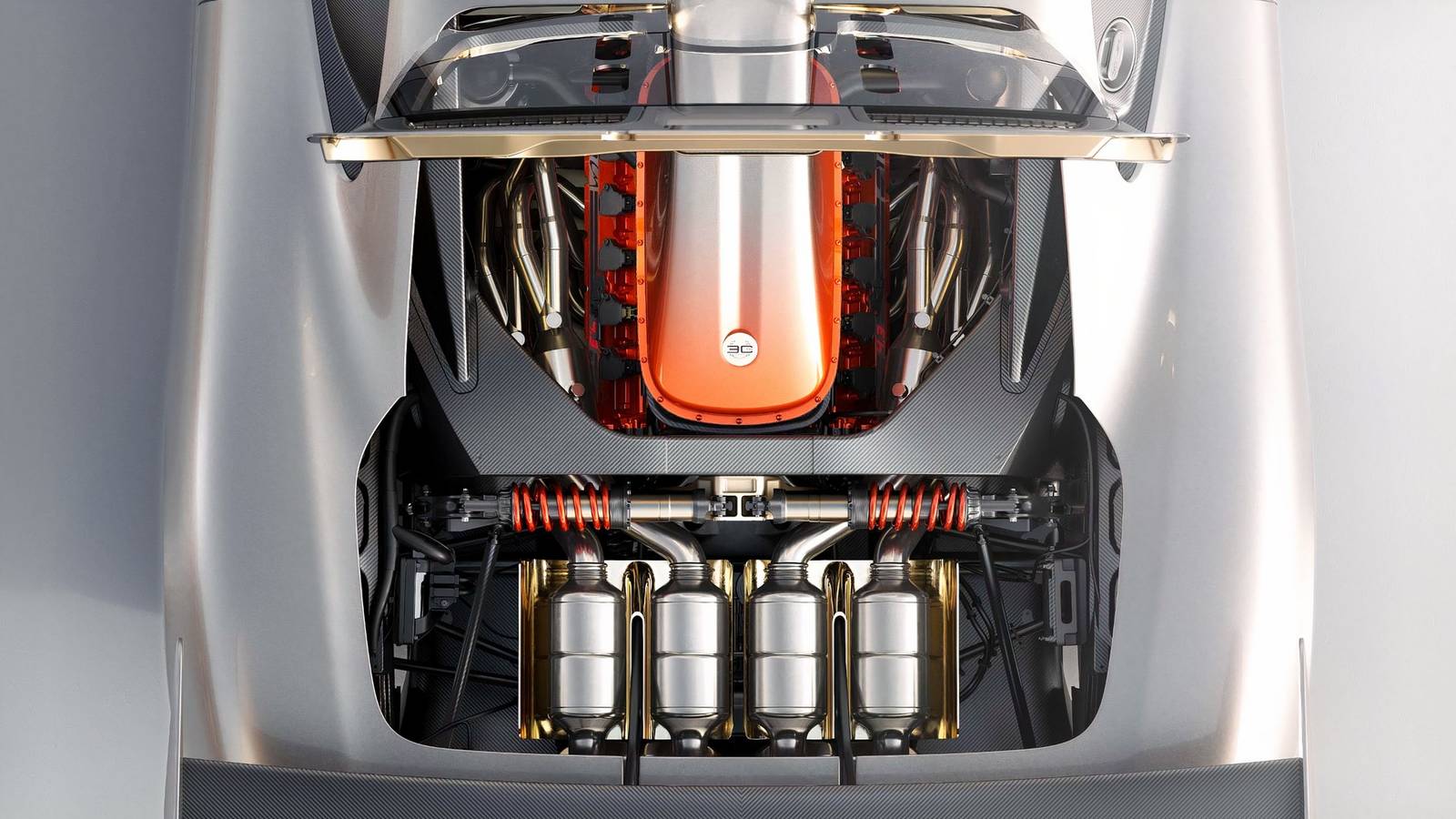In the rarified world of rare collector cars, used models have almost always cost more than their brand-new counterparts. A classic 1963 Ferrari 250 GTO costs many times more than the latest Ferrari F80 because of its historical significance, and that’s something that takes time to acquire and appreciate. Even the rarest and most exclusive new cars struggle to reach the stratospheric heights of their forebears. Take a look at the Bugatti La Voiture Noire. A one-off creation that sold for $18.7 million in 2019, some $14.7 million more than the already pricey Bugatti Chiron it was based on. Yet it still fell well short of the 1936 Bugatti Type 57SC Atlantic that was auctioned off for an estimated $40 million.
Another car that has soared in value in recent years is the McLaren F1, arguably one of the most historically significant cars ever built. Costing around $815,000 when it was released in 1992, these cars are now changing hands for over $20 million. Yet someone paid the same amount for a brand-new example of what is arguably its spiritual successor, yet it is still only in its development stage. We look into the fascinating story behind the GMSV S1 LM, a dream car in more ways than one.
All vehicle data is from reputable sources. Performance and power figures are from the relevant manufacturer.
To truly understand the value behind the latest GMSV S1 LM, we need to take a quick look back at the genesis of another supercar, the McLaren F1. Most true car enthusiasts dream of creating their own supercar before they’re tall enough to see over the steering wheel. Doodling outlandish designs on the back of textbooks is what kept most of us sane through hours of boring math lessons, and every so often, someone manages to combine the right life choices with a healthy dose of luck, and they get to design their own car in real life.
Gordon Murray is such a man, and the McLaren F1 was the car he turned from a simple sketch into a hypercar that changed the course of motoring history. Arguably, no other four-wheeled machine has come close to matching the purity and engineering genius of Murray’s creation, but many have tried.
Whenever someone tries to compare the towering achievement that the McLaren F1 was to some other car, remind them of the fact that a mildly modified example won the 1995 Le Mans outright. Its stablemates also took 3rd, 4th, and 5th places. Despite Murray never intending the F1 to be used as a track car – let alone be a racing machine – they needed very minor modifications to dominate the competition. The interiors were stripped out, downforce was increased, the brakes upgraded, and the power was limited too 600 hp to meet the regulatory requirements.
After that impressive initial victory, these race-prepped F1 GTRs became overnight legends, and they continued to post impressive results in the 1996 and 1997 Le Mans events as well. Five road-legal F1 LM cars were built to celebrate that 1995 win, and they came with a high-downforce aero pack, stripped out interiors, and even more power than the “regular” F1 cars, but were clearly closely related to them.
Barely 25 years after the F1 was released, Gordon Murray Automotive was established, and Murray set about building its spiritual successor. He waited that long to ensure that the technology available would truly allow him to create a modern version of this iconic model, and having his own company gave him the creative freedom he needed. The culmination of all this preparation and planning was the GMA T.50.
Revealed in 2021 and put into production in 2023, this car was everything the McLaren F1 had been, just modernized. It had the same obsessive attention to weight saving, the same central driving position, and a mid-mounted V12 sending power to the rear wheels through a manual transmission. The 654-hp T.50 was a second chance for 100 lucky individuals to capture the magic of the F1 for a 10th of the price. That price was still over $2 million, but these things are relative.
The 761-hp GMA T.50S Niki Lauda came next, a track-only variant with more power and downforce than the road car. This time, just 25 were built. The T.33 is the latest in the GMA range and is a more conventional two-seater road car, but still makes use of that exquisite Cosworth-developed 4.0-liter V12. 200 examples are planned, half will be Spider models with removable roof panels. While not all these differing GMA models have yet been built, every one has been allocated to a buyer.
So what does all this have to do with the S1 LM? Well, everything really, as the man who inspired Gordon Murray to create it was also the first customer to put down a deposit for the GMA T.50 when it was still just a twinkle in Murray’s eye.
It’s full-speed ahead for the niche company, promising more V12 manual supercars for years to come.
McLaren F1
McLaren F1 LM
GMA T.50
GMSV Le Mans GTR
GMSV S1 LM
Engine
6.1-liter V12
6.1-liter V12
4.0-liter V12
4.0-liter V12
4.3-liter V12
Power
618 hp
680 hp
661 hp
641 hp
690 hp +
Torque
479 lb-ft
520 lb-ft
353 lb-ft
344 lb-ft
n/a
0-60 mph
3.2 seconds
2.9 seconds est
2.8 seconds est
n/a
n/a
Number Built
64
5
100
24
5
The original McLaren F1 engine was intended to come from Honda, but BMW got the nod instead and created the S70/2 6.1-liter V12, a motor that is an integral part of the F1’s mythical status. For the GMA vehicles, a unique Cosworth-developed 4.0-liter V12 was built. This engine is a mechanical marvel, revs to 12,100 rpm, and is one of the most power-dense naturally aspirated engines ever built. Every one remains true to the mid-engined, rear-wheel-drive manual transmission layout.
There have been few times when Professor Gordon Murray had egg on his face, but this was one of them.
If all these amazing vehicles weren’t exclusive enough, Gordon Murray Special Vehicles (GMSV) was recently formed to allow for the creation of even more specialized offerings for a select few very lucky clients. The first to arrive are the GMSV Le Mans GTR and the GMSV S1 LM. The Le Mans GTR is in many ways the updated version of these five original F1 LM cars, and shares the T.50’s engine and other major parts, but also has some very special newly developed suspension and chassis components. It is homage to the 1997 F1 GTR longtail racers, and has completely redesigned bodywork and many other detail modifications to make it suitable for track use.
In most timelines, the announcement of the GMSV Le Mans GTR would be headline news for weeks on end, and it is a truly stunning thing. But GMA also revealed the GMSV S1 LM on the same day. And that overshadowed just about everything else at the Monterey Car Week this past August.
The S1 LM stands for ‘Special One Le Mans’, and it looks just like a McLaren F1 from the near future. Beneath those achingly beautiful lines are the bones of a T.50, but with a redesigned chassis and suspension layout – also shared with the GMSV Le Mans GTR to split development costs – and with a completely new 4.3-liter version of the Cosworth V12. It celebrates the 30th anniversary of that amazing 1995 Le Mans win, and it is the result of a close collaboration between Murray and one very determined (and anonymous) customer who wanted to turn his schoolboy dream into a reality.
An avid car collector and already the owner of several McLaren road cars, he approached Murray many years back to sign his bespoke P1 GTR, and ended up putting down a deposit for the upcoming T.50 road car instead. This led to the purchase of every GMA product Murray produced in the years to come, and eventually, they started talking about developing a car to honor Gordon Murray’s legacy and those epic Le Mans performances back in the 1990s. These two Special Vehicles creations are the result.
While 24 Le Mans GTR examples will be built, the S1 LM is limited to just five units, and all were bought by the mysterious collaborator who only recently auctioned one off for $20.6 million.
The world of collectors is always baffling to outsiders. How can a bottle of wine made 100 years ago – and most likely vinegar by now – be worth half a million dollars? Why are paintings of random landscapes worth more than some Malibu mansions? Rarity and an inability to recreate them are the real reasons behind these exorbitant values.
In the automotive world, there are so many continuation cars and retro mods these days that it is hard to separate the truly impressive offerings from the overpriced fakes. The S1 LM manages to avoid these pitfalls and draws on the rich heritage of Gordon Murray’s seminal work with the McLaren F1, while still being unique and modern. The fact that he was instrumental in its creation makes the GMSV S1 LM an instant classic. At $20 million, it nearly matches the iconic F1 in financial terms, but more importantly, it embodies everything that a pure driver’s car should be.
Sources: McLaren Automotive, GMA, GM SV
We want to hear from you! Share your opinions in the thread below and remember to keep it respectful.
Your comment has not been saved
This thread is open for discussion.
Be the first to post your thoughts.



















